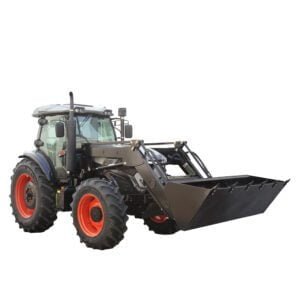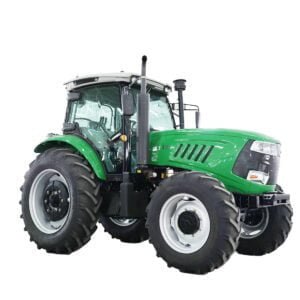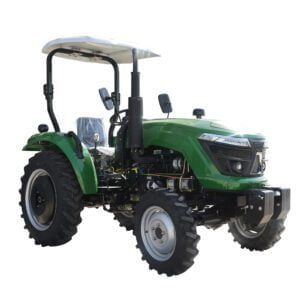بريد الالكتروني: [email protected] واتساب: 8618266768780
الآلات الزراعية الجرارات: دليل شامل
مرحباً بكم في مدونتي!
قبل أن نتعمق في المحتوى، أود منك الانضمام إليّ على منصات التواصل الاجتماعي الخاصة بي حيث أشارك المزيد من الأفكار وأتواصل مع المجتمع وأنشر التحديثات. إليك كيفية التواصل معي:
فيسبوك: https://www.facebook.com/profile.php?id=100072217509763
لينكدإن: https://www.linkedin.com/company/74949059/admin/dashboard/
يوتيوب:https://www.youtube.com/@tractormanufacturer-lc5qz
تيك توك: https://www.tiktok.com/@tractormanufacturer
الآن، لنبدأ رحلتنا معًا. أتمنى أن تجد المحتوى هنا مفيدًا وجذابًا وقيمًا.
مقدمة

تلعب الآلات الزراعية التي تستخدم الجرارات دورًا لا غنى عنه في الزراعة الحديثة، حيث تعمل على تعزيز الإنتاجية وتقليل العمالة وزيادة الكفاءة. ومع التقدم في التكنولوجيا، تطورت خيارات وقدرات الجرارات والآلات المرتبطة بها، مما يوفر للمزارعين أدوات متنوعة لتلبية الاحتياجات الزراعية المتنوعة. سيغطي هذا الدليل الشامل كل ما تحتاج إلى معرفته حول الآلات الزراعية التي تستخدم الجرارات، من أساسيات اختيار الجرار المناسب إلى الميزات المتقدمة ونصائح الصيانة واتجاهات الصناعة. سواء كنت مبتدئًا أو مزارعًا متمرسًا، يقدم هذا الدليل رؤى قيمة للمساعدة في تحسين عملياتك.
تطور الجرارات
يتميز تاريخ الجرارات بالتقدم التكنولوجي الكبير الذي أدى إلى تحويل الزراعة.
الطاقة الحيوانية إلى الطاقة البخارية: قبل ظهور محركات الاحتراق الداخلي، كان المزارعون يعتمدون على قوة الحيوانات لحراثة الحقول وأداء مهام زراعية أخرى. وكان تطوير الجرارات التي تعمل بالبخار بمثابة إنجاز كبير، حيث وفرت قوة وكفاءة أكبر.
ظهور محرك الاحتراق الداخلي: أحدث محرك الاحتراق الداخلي ثورة في تصميم الجرارات، مما أدى إلى ظهور آلات أكثر إحكاما وقوة وتنوعا. وأصبحت محركات الديزل، على وجه الخصوص، مصدر الطاقة السائد بسبب كفاءتها واقتصادها في استهلاك الوقود.
التحديث والأتمتة: لقد أدى دمج الأنظمة الهيدروليكية والضوابط الإلكترونية وتكنولوجيا نظام تحديد المواقع العالمي (GPS) إلى تحويل الجرارات إلى آلات ذكية قادرة على أداء المهام بدقة وكفاءة. ويمكن تجهيز الجرارات الحديثة بمجموعة واسعة من الميزات المتقدمة، مثل التوجيه التلقائي، والتطبيق بمعدلات متغيرة، والمراقبة عن بعد.
أنواع الجرارات والآلات الزراعية
1. الجرارات الخدمية
الجرارات متعددة الاستخدامات هي آلات متعددة الاستخدامات ومناسبة لمهام مختلفة مثل الحرث والسحب والتحميل. وهي مثالية للمزارع الصغيرة والمتوسطة الحجم وغالبًا ما تكون مصممة للعمل مع العديد من الملحقات.
2. جرارات المحاصيل الصفية
تم تصميم جرارات المحاصيل الصفية خصيصًا لزراعة المحاصيل الصفية، مع زيادة الخلوص وسهولة المناورة والتحكم الدقيق في العمليات مثل زراعة ورعاية صفوف المحاصيل.
3. جرارات البساتين
تعتبر جرارات البساتين جرارات مدمجة تسمح بالتنقل بسهولة عبر مساحات البساتين الضيقة، مما يجعلها مثالية لمزارع الفاكهة حيث تكون المساحة محدودة.
4. الجرارات المدمجة
الجرارات المدمجة أصغر حجمًا وأخف وزنًا ومصممة لتنسيق الحدائق وقص العشب والمهام الزراعية الصغيرة. وهي رائعة للمزارعين الهواة أو المزارع الصغيرة حيث تعد القدرة على المناورة والتنوع أمرًا أساسيًا.
5. الجرارات الثقيلة
تتميز هذه الجرارات بأنها آلات قوية مصممة للمهام المكثفة مثل الحرث العميق والرفع الثقيل في المزارع الكبيرة. توفر محركاتها قوة حصانية وعزم دوران مرتفعين، مما يجعلها مناسبة لبيئات العمل الصعبة.
ملحقات وأدوات الجرارات
يتم تعزيز تنوع الجرارات بشكل كبير من خلال مجموعة واسعة من الملحقات والأدوات المتاحة.
- أدوات الحرث:
- المحاريث: يستخدم لقلب التربة ودفن مخلفات المحاصيل.
- المسلفات: تفكيك الكتل الصخرية وتسوية التربة.
- المزارعون: السيطرة على الأعشاب الضارة وتهوية التربة.
- المسلفات القرصية: قطع وخلط بقايا المحاصيل في التربة.
- أدوات الزراعة والبذر:
- المزارعون: ضع البذور في التربة بدقة.
- آلات زرع البذور: توزيع البذور بالتساوي وبالعمق المطلوب.
- آلات نشر الأسمدة: توزيع الأسمدة بالتساوي.
- أدوات الحصاد:
- يجمع: حصاد الحبوب والبذور الزيتية والبقوليات في تمريرة واحدة.
- المكابس: قم بتعبئة القش والتبن والمحاصيل العلفية الأخرى في بالات.
- حصادات الأعلاف: تقطيع المحاصيل العلفية لتخزينها في السيلاج أو التبن.
- أدوات مناولة المواد:
- الرافعات الأمامية: رفع ونقل المواد.
- الحفارات الخلفية: حفر الخنادق واستخراج المواد.
- أدوات المشاركة الأرضية:
- جزازات العشب: قطع العشب والنباتات الأخرى.
- المحاريث: زراعة التربة ومكافحة الأعشاب الضارة.
- الخنادق: حفر الخنادق للري أو الصرف.
تحليل مقارن للآلات الزراعية بالجرارات
| ميزة | الجرارات ذات العجلات | الجرارات المجنزرة | الجرارات المدمجة |
|---|---|---|---|
| الملاءمة للتربة الرطبة | قليل | عالي | معتدل |
| القدرة على المناورة | معتدل | قليل | عالي |
| براعه | عالي | معتدل | عالي |
| يكلف | معتدل | عالي | قليل |
| التطبيقات | الزراعة العامة | ظروف العمل الشاقة/الرطبة | الزراعة/تنسيق الحدائق على نطاق صغير |
اختيار الجرار الزراعي المناسب للآلات الزراعية
يتطلب اختيار الجرار المناسب فهمًا عميقًا للاحتياجات المحددة لمزرعتك. وفيما يلي بعض العوامل التي يجب مراعاتها:
خيارات الميزانية والتمويل
يمكن أن تكون الجرارات استثمارًا كبيرًا، لذا فإن اختيار طراز يناسب ميزانيتك ويقدم خيارات تمويلية يمكن أن يساعد في إدارة التكاليف بشكل فعال.
حجم المزرعة ونوع المحصول
تستفيد المزارع الأكبر من الجرارات ذات القدرة الحصانية الأعلى والسعة الأكبر، بينما قد تحتاج المزارع الصغيرة فقط إلى جرارات صغيرة الحجم أو متعددة الاستخدامات.
المرفقات وتوافقية التنفيذ
تتطلب المهام المختلفة ملحقات مختلفة، من جزازات العشب إلى آلات البذر والمحاريث. تأكد من أن الجرار الذي تختاره متوافق مع الملحقات اللازمة لعملياتك.
القوة وسعة المحرك
يجب أن تتناسب قوة حصان الجرار مع حجم العمل. بالنسبة للمهام الشاقة، فإن قوة الحصان العالية ضرورية.
الجرارات والزراعة الدقيقة

الزراعة الدقيقة هي نظام إدارة زراعي يستخدم التكنولوجيا لجمع وتحليل البيانات لتحسين إنتاج المحاصيل. تلعب الجرارات دورًا حاسمًا في الزراعة الدقيقة من خلال:
تطبيق المعدل المتغير: تطبيق المدخلات مثل الأسمدة والمبيدات بمعدلات متفاوتة بناءً على ظروف التربة والمحاصيل.
التوجيه التلقائي: توجيه الجرار تلقائيًا على طول خطوط مبرمجة مسبقًا، مما يقلل التداخل ويحسن الكفاءة.
رسم خرائط العائد: إنشاء خرائط لإنتاج المحاصيل لتحديد المناطق التي تتطلب اهتماما إضافيا.
استشعار التربة: استخدام أجهزة الاستشعار لمراقبة رطوبة التربة ومستويات العناصر الغذائية وعوامل أخرى لتحسين تطبيقات الإدخال.
استنتاج
تُعد الآلات الزراعية التي تستخدم الجرارات ضرورية للزراعة الفعّالة والمستدامة، فهي توفر التنوع والقوة والدقة التي تبسط العمليات الزراعية. بدءًا من اختيار النوع والطراز المناسبين إلى صيانتها بفعالية، يهدف كل جانب من جوانب هذا الدليل إلى مساعدة المزارعين على اتخاذ قرارات مستنيرة تفيد مزارعهم على المدى الطويل. سواء كنت تستثمر في جرار لأول مرة أو تقوم بتحديث جرار موجود، فإن فهم هذه الأساسيات سيضمن لك تعظيم الإنتاجية وطول العمر وكفاءة التكلفة في مزرعتك.
من خلال الاستثمار في الآلات الزراعية ذات الجودة العالية، فإنك تجهز مزرعتك للنجاح، وتحسن الإنتاج، وتساهم في مستقبل الزراعة.
التعليمات
ما هو دور الآلات الزراعية الجرارات في الزراعة الحديثة؟
تلعب الآلات الزراعية التي تعمل بالجرارات دورًا بالغ الأهمية في الزراعة الحديثة من خلال أتمتة المهام مثل الحرث والزراعة والحصاد، مما يسمح للمزارعين بإدارة مساحات كبيرة بكفاءة أكبر وبأقل جهد يدوي. كما أنها تساعد في تقليل الوقت وزيادة الإنتاجية وتحسين غلة المحاصيل في نهاية المطاف.
كيف أختار الجرار الزراعي المناسب لمزرعتي؟
يعتمد اختيار الجرارات الزراعية المناسبة على عوامل مثل حجم المزرعة ونوع المحصول والملحقات المطلوبة والميزانية. قد تستفيد المزارع الصغيرة من الجرارات المدمجة أو متعددة الأغراض، في حين قد تتطلب العمليات الأكبر نماذج ثقيلة أو متخصصة ذات قوة حصانية عالية للمهام المكثفة.
ما هي متطلبات الصيانة للآلات الزراعية الجرارات؟
تتضمن صيانة الآلات الزراعية للجرارات عمليات فحص منتظمة وتغيير السوائل والفلاتر والتزييت والتحقق من الأجزاء البالية. تضمن الصيانة الروتينية وفقًا لإرشادات الشركة المصنعة الأداء الأمثل وتطيل عمر الآلات.
كيف يمكن للآلات الزراعية الجرارات تحسين كفاءة المزرعة؟
تعمل الآلات الزراعية التي تستخدم الجرارات على تحسين كفاءة المزارع من خلال السماح للمزارعين بتغطية مساحات أكبر في وقت أقل وبموارد أقل. كما تعمل الميزات المتقدمة مثل الملاحة الموجهة بنظام تحديد المواقع العالمي (GPS) والتوجيه الآلي والمحركات الموفرة للوقود على تعزيز الإنتاجية والدقة في المهام الزراعية.
ما هي أنواع الآلات الزراعية الجرارات الأفضل للمهام الزراعية المحددة؟
تناسب أنواع مختلفة من الآلات الزراعية الجرارات مهام محددة: الجرارات متعددة الاستخدامات ومناسبة للمهام العامة، وتتفوق جرارات المحاصيل الصفية في زراعة الصفوف، وتعمل جرارات البساتين بشكل جيد في المساحات الضيقة، وتتعامل الجرارات الثقيلة مع العمليات المكثفة واسعة النطاق.
معلومات عنا
شركة Shandong Qilu Industrial Co. ، Ltd. هي شركة مصنعة ومصدرة محترفة تدمج تطوير وإنتاج الحفارات واللوادر والجرارات. نحن نقدم أفضل خدمة ، بالتأكيد.
المشاركات الاخيرة
فيديو تجريبي
-1.png)
اتصل بنا اليوم!
اي سؤال او اقتباس او استفسار؟ انقر فوق الزر لإرسال رسالة.
سوف Qilu Industrial دائمًا هنا للمساعدة.









